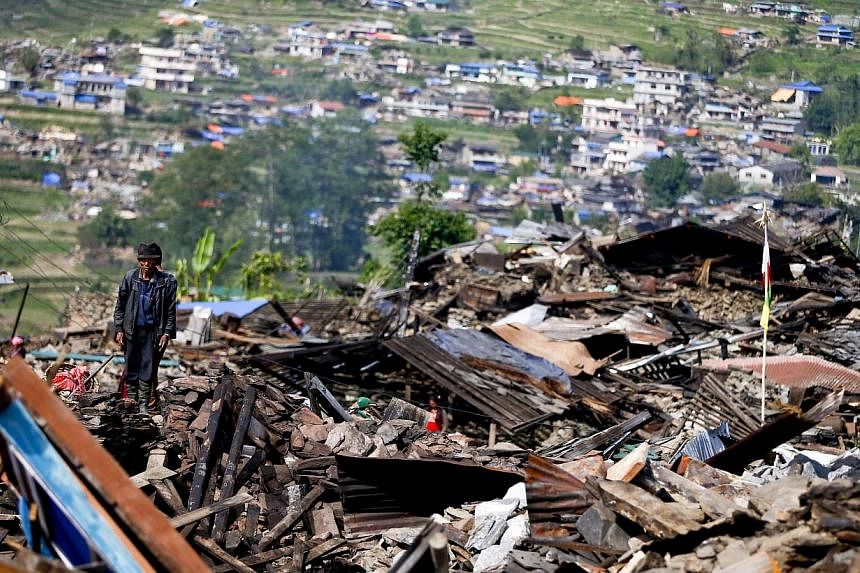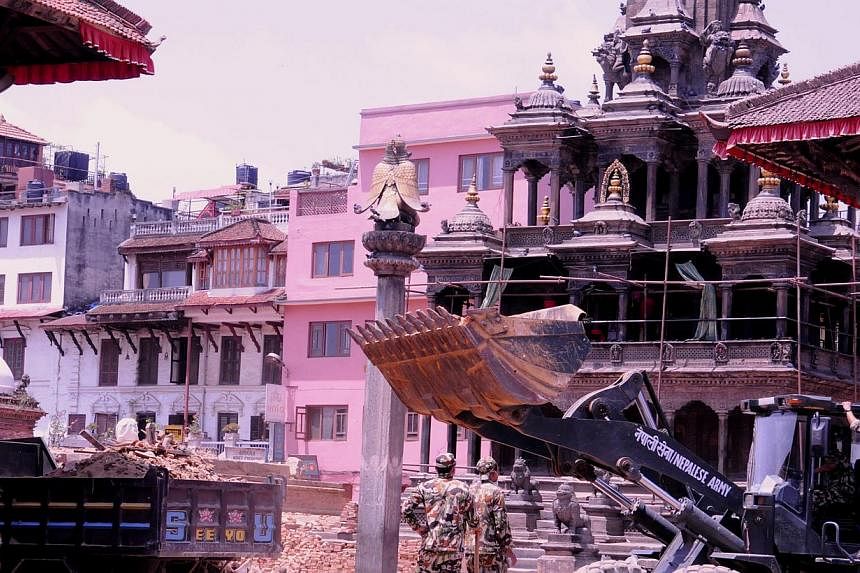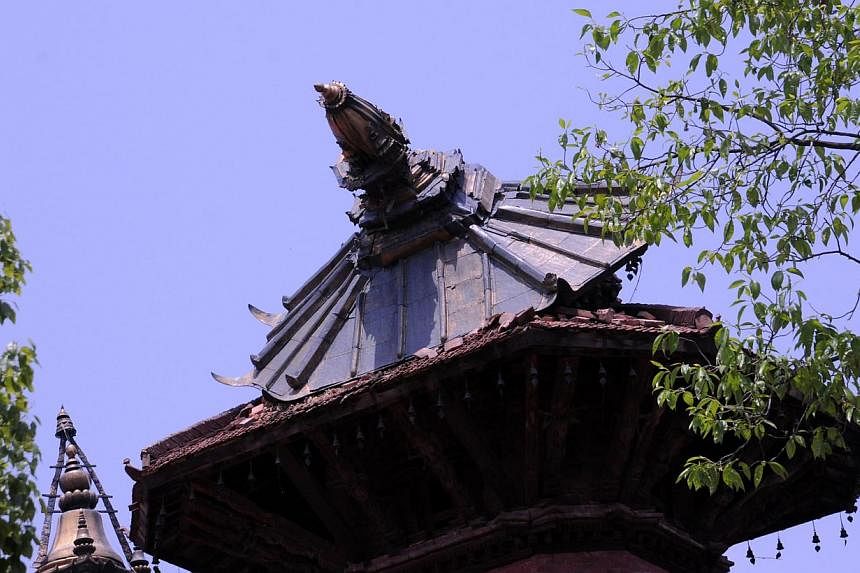Piled in the central courtyard of the Patan Museum lie the architectural treasures of centuries.
Among bits of roof and wall are intricately carved wooden panels and lintels, and stone idols - one, a large carving of the Hindu deity Harishankar, half Vishnu and half Shiva, cracked through and through. A pair of big bells, their metal dented and perforated, sit in a corner of the big courtyard.
Restoring the temples of Patan - a culturally rich city in the Kathmandu valley - is the biggest challenge of his career for Mr Rohit Ranjitkar, 50, a conservation architect who is country director of the non-profit Kathmandu Valley Preservation Trust (KVPT).
Mr Ranjitkar, who assessed the restoration of the Kathmandu valley's heritage for his doctorate, can now field test his academic knowledge as the KVPT embarks on the immense task of restoring the temples of Patan.
At least six major temples clustered in Patan's historic Durbar Square crashed to the ground in the earthquake of April 25. Others also collapsed in the valley's other heritage cities; the damage was even worse in the bigger cultural centre of Bhaktapur on the outskirts of the sprawling capital Kathmandu.
In Patan, the KVPT was quick to coordinate with the army. Quietly through the week, as the area was swiftly cordoned off, 155 soldiers, 55 policemen and dozens of local community volunteers, under the supervision of KVPT, retrieved carved treasures from the rubble of the fallen temples and placed them in the museum courtyard. The area is being patrolled by armed police.
It is hard to explain why some temples collapsed and others did not, but there are many variables involved, said Mr Ranjitkar. The foundations of the temples differ. The way they were built also differs - some were constructed loosely while some were well bound, for example, with timber skirting which tourists peruse for their intricate carvings, and which also performs the practical job of holding buildings together like a belt.
The force unleashed by the earthquake also varied. Soil condition is another factor; few are aware, for example, that Kathmandu was once a lake.
Restoration of damaged temples after the 1934 earthquake took up to six years. Some were rebuilt in styles and materials faithful to the original, some differently, and some were never rebuilt.
Many were not well maintained, Mr Ranjitkar said regretfully. This is partly because the temples of Patan are living temples, used for worship by locals on a daily basis.
"To the community here, the architecture is not important. The function is more important than the building. The temple is seen as a home of god; that is the most important thing. So structures are often altered, or replaced with something new.
"But as conservation architects, we think differently. We think of the history, and of the aesthetics."
On the rebuilding this time round, "it depends on the resources we have", Mr Ranjitkar said as he contemplated the jumble of shattered relics, which he and his team will start labelling on Sunday.
"And one group can't do everything," he said. Other groups would have to join forces with his to cope with the immensity of the work.
"And now that we are starting from scratch, we need to think of earthquake risk as well."
But first comes the daunting task of dealing with teetering temples. The top tier of one, Patan's Taleju, once the private temple of the kings, keeled over and is balanced precariously on top of the temple. If it had fallen, the heavily embellished piece would have destroyed half the building.
The challenge is to remove it, make the repairs and then put it back. A crane can't be brought into the area, said Mr Ranjitkar and his friend Dilendra Srestha, a past president of the Patan Tourism Development Organisation.
They both peered up at the heavy, umbrella-shaped piece.
"We may have to get a helicopter to lift it off and then put it back on," said Mr Srestha.






